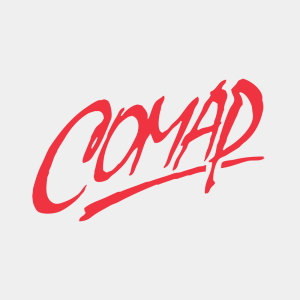
Student Team Brings the Great Wall of China Into Today’s Math Classroom
Two students from Vanke Meisha Academy in Shenzhen, China, recently updated COMAP’s Elementary Pull-Out: The Great Wall of China as part of our Refresh for Relevance (R4R) challenge.
We were expecting and still expect teachers to participate in R4R; however, early in the first cycle of submissions Jun Wei Zeng and Chun Yu Zhu asked if students were permitted and we said of course! In hindsight we realized that students might have particularly valuable contributions to offer. Their work on this module helps modernize it while keeping its focus on proportional reasoning and geometric modeling, and adding opportunities for creativity, technology use, and collaboration.
Jun Wei Zeng and Chun Yu Zhu’s revisions will be integrated along with other revisions we’ve received and will be credited in the new list of authors. What follows are some reflections on their R4R experiences.
Connecting Cultural Heritage to Mathematics
The choice of topic was both personal and practical for the team. As students from China, they saw the Great Wall as a cultural symbol that could also serve as a rich mathematical teaching tool.
“The Great Wall of China is not only an iconic structure but also perfect for teaching proportional reasoning and geometric modeling,” they said. “By choosing it, we could celebrate our cultural heritage (as we are international students from China) while incorporating modern tools like Desmos, Python, and AI image generation, bringing both history and mathematics to life.”
By linking a well-known historical structure to modern math modeling techniques, the updated module invites students to see connections between the past and the present, and between math and the world around them, much like our perspective on the math modeling mindset.
Streamlining and Modernizing the Lesson
The team wanted the lesson to stay centered on its main purpose, so one of their first steps was to drop the original home activity sheet. They felt it pulled attention away from the key ideas. In its place, they added activities meant to spark discussion and keep students working together.
The updated version brings in:
- Desmos, Python, and AI-generated images to support the math work.
- A group poster project that gets students talking and sharing ideas.
- Interactive modeling tools so concepts can be explored visually, not just on paper.
These updates give teachers more ways to connect with students while making the math both accessible and engaging.
Favorite Part of the Redesign
For Jun Wei and Chun Yu, the most enjoyable part of the process was bringing static content to life with technology.
They explained: “Our favorite part was integrating AI image generation and interactive modeling tools. It was exciting to see how technology could turn static drawings into dynamic, interactive learning experiences. We also enjoyed designing the group poster activity, which brings creativity and teamwork into a math lesson.”
These additions give students more ways to approach the work, look at the problem from different angles, and collaborate as they develop their solutions.
Learning Through Technology
The project also deepened the team’s understanding of math modeling and the role of technology in the process. According to the duo, “We learned how tools like Desmos can simplify complex proportional modeling and how Stable Diffusion and Python-based scripts can visualize and contextualize mathematical concepts. It taught us that mathematics isn’t limited to formulas—it’s a bridge to design, storytelling, and technology.”
Working with these tools helped them turn abstract ideas into something more tangible, and showed that math can be both useful and creative.
Advice for Future R4R Participants
Looking ahead, the team hopes other students will take advantage of the creative freedom R4R offers.
“Think big and don’t be afraid to experiment with advanced tools. Even small improvements — like replacing pencil-and-paper tasks with interactive platforms — can transform learning experiences,” they said. “If you have access to AI tools like Stable Diffusion or ChatGPT, explore how they can elevate creativity and engagement.”
Their approach shows that even modest updates to an existing module can open new doors for engagement and understanding.
What They Hope Teachers and Students Take Away
For the team, the updates weren’t only about fresh visuals or extra activities. They wanted to shift how students experience mathematics.
“We hope they see that mathematics can be both rigorous and creative. By integrating AI and modeling tools, math learning can feel modern, exciting, and globally relevant while still focusing on core skills like ratio and geometry.”
It’s a reminder that math modeling isn’t just about finding answers. It’s also about exploring ideas, imagining possibilities, and making connections.
What Students Might Enjoy Most
Finally, the team thought about what would capture students’ interest most if the module were used in classrooms.
“Students would likely love the freedom to be creative — generating their own AI images, designing posters, and using interactive modeling tools to visualize one of the world’s most iconic structures. It’s hands-on, tech-driven, and collaborative — exactly how modern classrooms should feel.”
With a balance of math, technology, and creativity, their updated module is designed to engage students in ways that are relevant to today’s learning environments.
It’s another example of how students can take the lead in shaping learning experiences. For more, check out our first-time MCM team feature.
Written by
COMAP
The Consortium for Mathematics and Its Applications is an award-winning non-profit organization whose mission is to improve mathematics education for students of all ages. Since 1980, COMAP has worked with teachers, students, and business people to create learning environments where mathematics is used to investigate and model real issues in our world.
